RBT Assessment – Domain B of the Task List | Free Guide
RBT Assessment is a core component of Applied Behavior Analysis (ABA), guiding how intervention plans are developed, monitored, and improved. For a Registered Behavior Technician, assessment involves collecting accurate data that reflects the client’s needs, preferences, and behavior patterns. These observations allow the supervising behavior analyst to make evidence-based decisions and tailor treatment effectively. While RBTs do not conduct or interpret assessments independently, their support is vital in carrying out procedures as designed by their supervisors.
Domain B of the RBT Task List outlines three specific skills: B-1 to B-3, which involve conducting preference assessments, assisting with individualized assessments, and supporting functional assessment ABA procedures. These three tasks are defined in the official RBT Task List published by the Behavior Analyst Certification Board (BACB). These tasks ensure that interventions are built on real data rather than assumptions and that clients receive personalized, effective care. Through consistent data collection and objective reporting, the RBT plays a key role in the quality and success of ABA services.
RBTs who understand and master the skills outlined in Domain B demonstrate their ability to support clinical teams with accuracy, professionalism, and ethical consistency. Whether working in clinics, schools, or home-based settings, these RBT assessment skills ensure that behavior analysts have the critical data they need to design meaningful interventions.
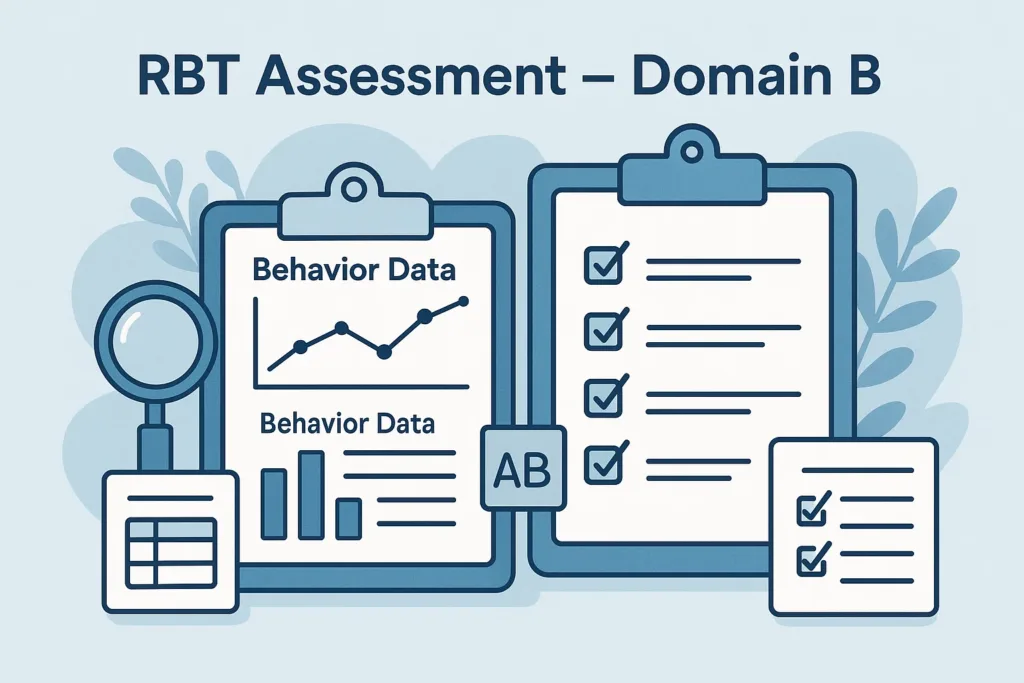
Table of Contents
B-1: Conduct Preference Assessments
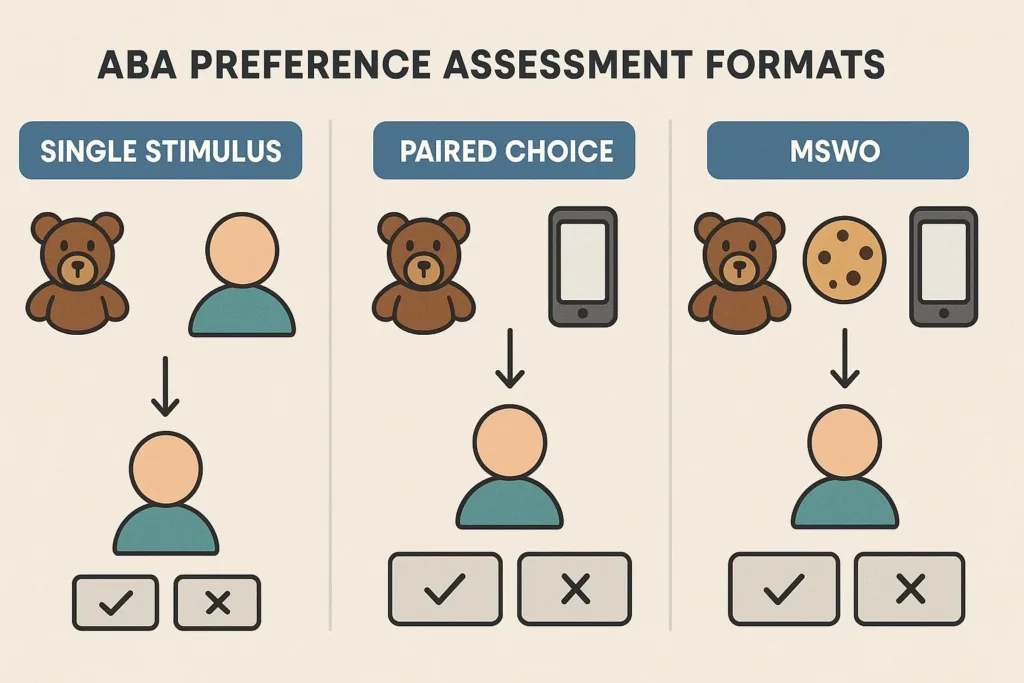
Understanding what motivates a client is fundamental to designing effective ABA therapy. That’s why preference assessments are one of the most essential tools in the RBT’s toolkit. A preference assessment is a structured way to identify stimuli that may serve as reinforcers — that is, items or activities that increase the likelihood of a behavior occurring again.
RBTs are often responsible for implementing these assessments according to the behavior analyst’s plan. There are several types of preference assessments, including:
- Single stimulus: One item is presented at a time to gauge the client’s reaction.
- Paired choice: Two items are presented, and the client selects one; this process is repeated in different combinations to create a hierarchy of preferences.
- Multiple stimulus with or without replacement (MSWO/MSW): Several items are presented simultaneously, and selections are tracked across multiple trials.
You can explore examples and free tools for conducting preference assessments provided by the Autism Partnership Foundation.
For example, a Registered Behavior Technician working with a child who is nonverbal might offer different toys in pairs to determine which one the child consistently chooses. If the child reaches for the bubbles over and over again, bubbles may be an effective reinforcer for that client.
To perform this task accurately, RBTs must:
- Follow the supervisor’s protocol without deviation.
- Present items consistently (same order, timing, and tone).
- Record data precisely, noting selections and refusal.
- Update preferences over time — reinforcement value changes.
Common mistakes to avoid include:
- Relying on assumed preferences without formal assessment.
- Offering reinforcers that have already lost effectiveness (due to satiation).
- Not rotating or randomizing item positions during paired-choice assessments.
Conducting preference assessments ensures that reinforcement remains effective and individualized. Without proper assessment, a reinforcer might not actually increase the desired behavior — making this task central to high-quality assessment.
If you’re unfamiliar with continuous and discontinuous data types, visit the Measurement module (A-1 to A-6) for a full breakdown.
B-2: Assist with Individualized Assessment Procedures
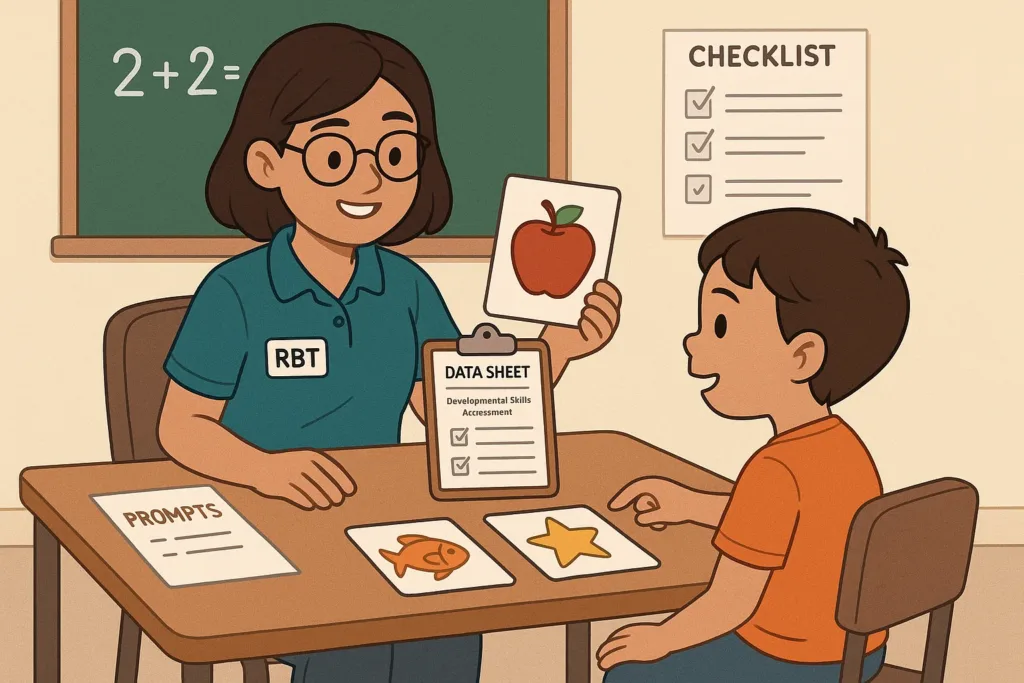
In addition to identifying reinforcers, RBTs assist with a wide range of individualized assessment procedures. These assessments help determine the client’s current skill levels, areas of need, and readiness to learn new behaviors. Examples include curriculum-based assessments, developmental assessments, and social skills inventories.
Although the behavior analyst selects the assessment tool and interprets the results, the RBT may be responsible for conducting parts of the assessment. This includes:
- Setting up materials and preparing the teaching environment.
- Delivering instructions or prompts exactly as written.
- Collecting accurate data on the client’s responses.
- Maintaining consistency in delivery to ensure data validity.
Let’s say an RBT is assisting with a curriculum-based assessment for a 6-year-old client who is learning to request help. The behavior analyst has outlined a script and prompts. The RBT might be responsible for delivering the instruction, prompting the client if needed, and recording whether the client responded independently, with prompts, or not at all.
The key to this role is fidelity: following the assessment protocol exactly as written. Even slight changes — like altering the phrasing of a prompt — could skew the results and lead to inaccurate treatment planning.
Tips for RBTs:
- Review the assessment instructions thoroughly before the session.
- Clarify any uncertainties with your supervisor in advance.
- Use neutral tone and body language to avoid influencing responses.
- Maintain a distraction-free setting to support client focus.
Common ethical pitfalls include:
- “Helping” too much during the assessment (overprompting).
- Recording responses subjectively instead of factually.
- Deviating from the planned task sequence without approval.
Assisting with individualized assessments gives the supervising analyst the insight needed to create meaningful, achievable goals. It also reinforces the Registered Behavior Technician’s role in objective, data-based service delivery — a core pillar of ethical ABA.
Once assessments are complete, the next step is teaching skills — covered in our Skill Acquisition module (C-1 to C-12).
B-3: Assist with Functional Assessment Procedures
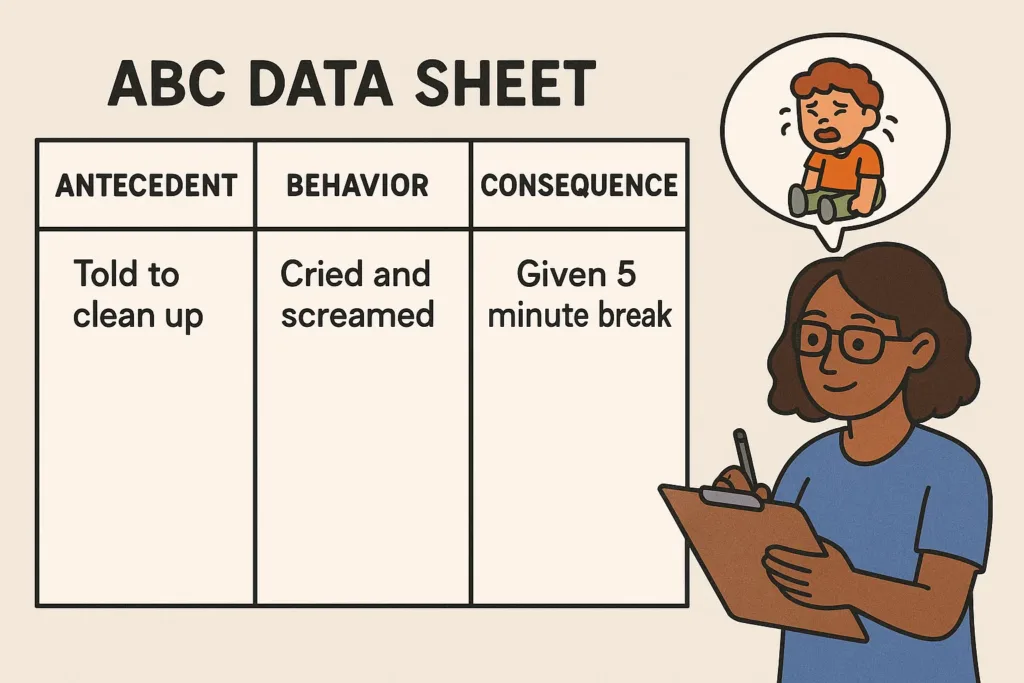
Understanding the function of behavior is essential to developing effective behavior intervention plans. This is where functional assessment ABA procedures come into play. A functional assessment seeks to determine why a behavior is occurring — what need or purpose it serves for the client. Common functions include gaining attention, escaping demands, accessing tangibles, or achieving automatic (sensory) reinforcement.
While behavior analysts lead the development and interpretation of functional assessments, Registered Behavior Technicians assist by collecting the observational data required to identify patterns. One of the most important tools used by RBTs in this process is ABC data collection:
- A – Antecedent: What happened immediately before the behavior?
- B – Behavior: What exactly did the client do?
- C – Consequence: What occurred immediately after the behavior?
Example:
Imagine a client frequently throws toys during circle time. The RBT records:
- A: Teacher announces transition to circle time.
- B: Client throws a toy across the room.
- C: Client is removed from the group for a break.
This pattern suggests the behavior may be maintained by escape. By collecting this data over multiple sessions, the behavior analyst can determine whether escape is consistently the function and design appropriate interventions (e.g., teaching the client to request a break appropriately).
RBT responsibilities include:
- Collecting accurate, objective ABC data without assumptions.
- Observing without interrupting unless safety is at risk.
- Following any specific procedures outlined by the supervisor for structured observation or probes.
- Reporting unusual behavior patterns or inconsistencies immediately.
Common errors to avoid:
- Using vague or subjective language (e.g., “client got upset”).
- Forgetting to track the full ABC sequence.
- Guessing the function of behavior rather than sticking to observable data.
RBTs should also be aware of their scope of practice — they do not analyze or determine the function of behavior independently. Their role is to collect data and communicate clearly with the supervising behavior analyst.
Functional assessment is one of the most important areas in assessment, as it lays the groundwork for behavior reduction plans that are humane, effective, and individualized. RBTs who collect high-quality data empower the clinical team to intervene in a way that benefits the client and aligns with the ethical standards of ABA.
Conclusion: Why RBT Assessment Matters for Success
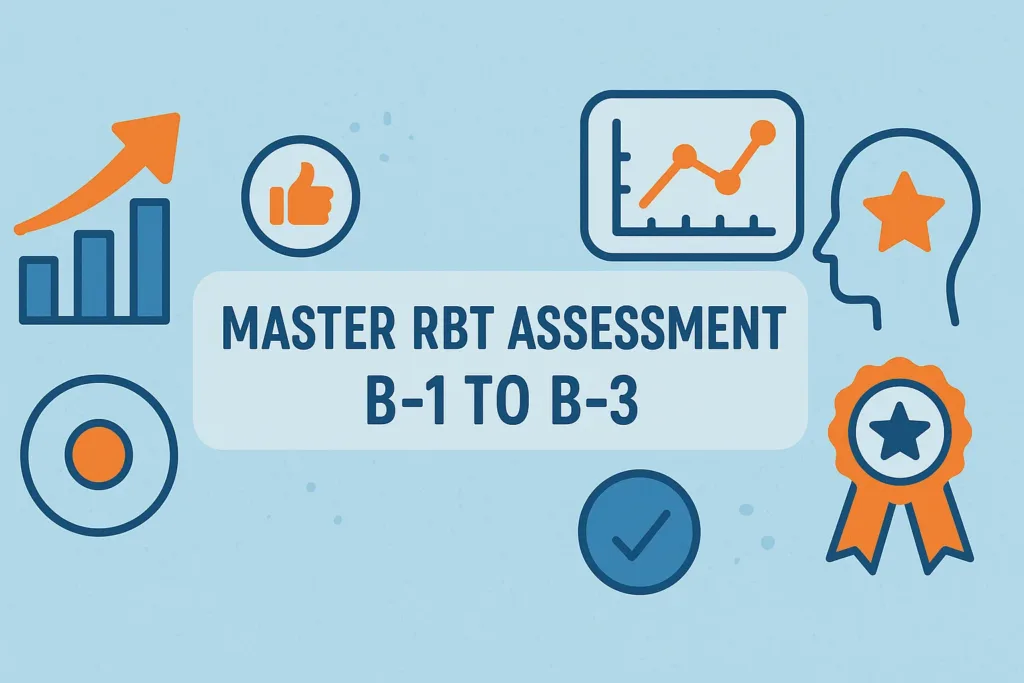
The Assessment domain of the RBT Task List (B-1 to B-3) defines how RBTs support the clinical foundation of ABA services. From conducting preference assessments to collecting behavior data during functional assessment ABA procedures, each task reinforces the importance of objective, client-specific information in behavior analysis.
These responsibilities are often where treatment planning begins. RBTs are trusted to observe, document, and assist with assessments that will influence all other domains of the behavior plan — from skill acquisition to behavior reduction. Their accuracy and professionalism in this process cannot be overstated.
Mastering assessment tasks shows that you not only understand how ABA works but also how to support clients ethically, legally, and effectively under the direction of your supervisor. These are not background roles — they are central to client progress and team success.
As a Registered Behavior Technician, your role in assessment is not to diagnose or interpret but to gather clean, consistent, and meaningful data that informs the work of your entire ABA team. That’s why B-1 to B-3 should be studied, practiced, and reviewed consistently — because when done right, they shape lives for the better.
Ready to apply what you’ve learned? Take our RBT Assessment Practice Test (B-1 to B-3) to reinforce your understanding of client evaluations and behavior data.
